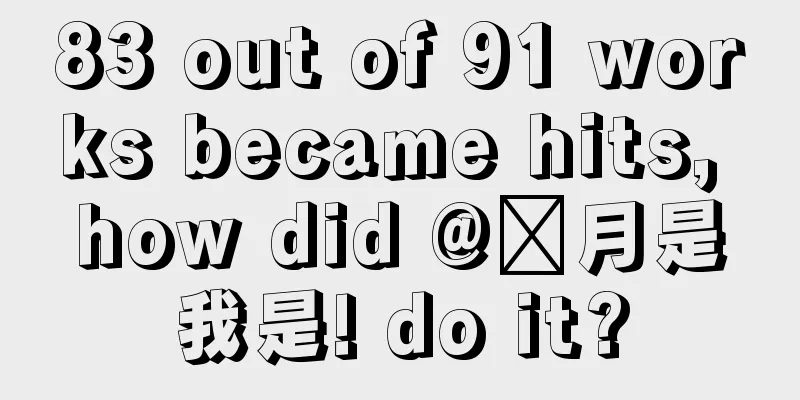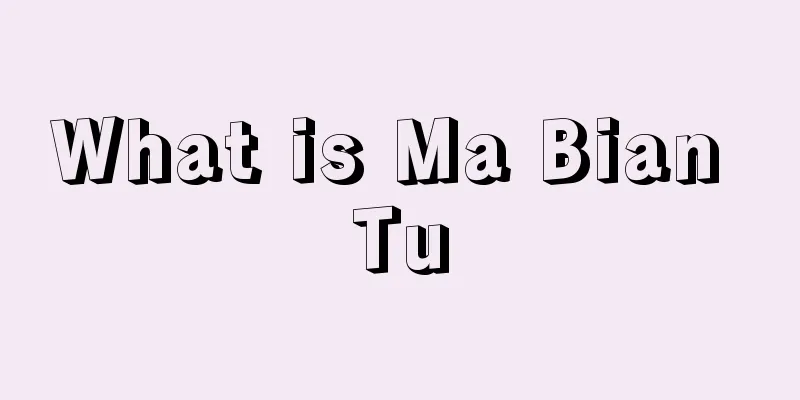In-stream ads are not the optimal solution for B station's commercialization

In March, Bilibili released its 2023 financial report, with total annual revenue reaching 22.53 billion yuan, of which the advertising segment's annual revenue reached 6.4 billion, a year-on-year increase of 27%. However, some investors and netizens seem to be dissatisfied, after all, iQiyi and Kuaishou have achieved profitability. The market is eager for commercialization, so almost every time it releases financial reports, there are people who earnestly persuade Bilibili to give up its rule of "never running patch ads". It’s quite interesting that the management of Bilibili has to deny it over and over again every time, as if it has become a regular program. Based on the opinions in the market, there are basically two reasons why people urge B station to open patch ads:
I don’t deny that patch ads can definitely increase Bilibili’s advertising revenue, because some advertisers do have the demand for placements, but I still believe that patch ads are not a panacea for Bilibili’s advertising commercialization. 1. Brand advertising market is shrinkingMost of the demand for patch ads is met by brand advertisers, so patch ads are generally placed in the brand advertising category. Let me share a data I got: In 2020, the patch advertising market was still booming, and the entire market was expected to be worth 11.4 billion. However, by 2021, the patch advertising market had already entered a downward channel, reaching 10.6 billion. And by 2022, the market suddenly dropped to about 8 billion. The overall environment in 2023 will be better, but I don’t expect it to be enough to support an explosive rebound, and the entire patch advertising market will hover around 9 billion. What happened during this period? The primary reason is, of course, masks. KA advertisers have tightened their purse strings, and the first thing to cut is the brand advertising budget, which seems a bit empty. In addition, the main battlefield of pre-roll ads is online video platforms, and Youku, iQiyi and Tencent Video have all turned to a "membership first" strategy. Under the design that members do not watch ads, the contribution of ads is getting lower and lower. In addition, the number of active users and online time of online videos are no longer growing, which has caused the inventory of pre-roll ads to almost stagnate. This has caused the revenue from patch ads to continue to shrink. Take iQiyi as an example. Its advertising revenue was 830 million in 2019, but it has dropped to 620 million in 2023, and the proportion of advertising in total revenue has also dropped from 29% to 20%. Some people may say that the stagnation of the growth of Youku, iQiyi and Tencent Video’s advertising inventory is precisely the opportunity for Bilibili to allow video interstitial ads. Not really. Just like I want to eat braised chicken at noon, but the braised chicken and rice shop downstairs suddenly closed down. Anyway, my goal is to fill my stomach so that I can work, so why don’t I go to the Xinjiang restaurant next door to eat big plate chicken? By the same token, if an advertiser wants to do brand advertising, he or she does not necessarily have to invest in the oldest traditional form of patch advertising. In fact, the innovative brand advertising forms and influencer marketing models that have emerged in recent years are grabbing advertisers' budget pool for brand advertising. In 2022, I communicated with a person in charge of L'Oreal's advertising, and he shared a discovery: after conversion, the CTR (click-through rate) of patch ads is not as good as the topview ads of Douyin and Kuaishou, and they have allocated more budget to topview. Topview is an advertising format launched by Douyin in April 2019. Currently, short video platforms such as Kuaishou have this format. Simply put, topview combines the two brand advertising formats of splash screen advertising and video information flow advertising. Its characteristics are high reach and strong user perception, but its disadvantage is that it is too expensive. The CPM of a 15-second topview on Douyin is around 240 yuan, or even higher. The CPM of iQiyi's patch advertising is 140 yuan. The mantis stalks the cicada, unaware of the oriole behind. Here, topview and influencer marketing are competing for the budget of brand advertising. Looking at the Internet advertising market, e-commerce advertising, search advertising and other performance advertising are eroding the budget of brand advertising. As far as I know, JD.com has stopped placing pre-roll ads on Tencent Video in 2022, and has switched to more efficient bidding ads. Alibaba's consumer product clients have also reduced their hard advertising budgets on Youku, giving priority to e-commerce advertising on Tmall. There is another thing that can indirectly confirm my point of view. Just think about it: If interstitial ads are a gold mine, then why doesn't TikTok, which is so aggressive in commercialization, put interstitial ads on Xigua Video? As far as I know, Xigua Video also has pre-roll ads, but they use the post-roll mode, that is, the ads are displayed after the video is played, and they support image and video ads. However, this post-roll format has very low brand visibility, and big brand advertisers don't buy it. It is usually used when it is necessary to supplement the volume of customers, or to accept the placement of some performance advertisers, so it can't be sold at all. 2. YouTube’s advertising model is not suitable for BilibiliMany people regard Bilibili as China's YouTube. After all, YouTube has 2.7 billion monthly active users worldwide, and its advertising revenue reached US$31.5 billion in 2023, with each user contributing an average of US$11.6 in advertising revenue. In comparison, Bilibili has 336 million monthly active users and advertising revenue of 6.4 billion yuan, with each user contributing 19 yuan in advertising. The former is 4.4 times that of Bilibili. It seems that compared with YouTube, the ceiling of B station's advertising is very high, so some people advocate that B station's advertising model should be copied from YouTube. I roughly sorted it out and found that there are currently 4 mainstream advertising models on YouTube:
Let me tell you the conclusion directly: since most of the videos on Bilibili are currently 2-3 minutes long, the most suitable ones are 5-second skippable ads and 6-second guide ads. However, the 6-second guide ads are quite harmful to the user experience: if users are bombarded with the same 6-second ads every time they click on a video that lasts several minutes, whether before or after the video is played, many people will probably be furious. So smart netizens have come up with a specific solution that takes into account both user experience and customer value:
The above two solutions seem to be comprehensive, but if you think about it carefully, there seems to be something wrong. What was everyone's original intention in persuading Bilibili to allow pre-roll ads? Was it to take into account both user experience and commercial demands? No. Our fundamental goal is to increase commercial advertising revenue. Let’s talk about the first solution first. In the past, the advertising inventory of patches was determined by the platform and then sold to advertisers. If UP hosts were allowed to decide whether to add patches, this would create a fatal problem. This part of the high-quality advertising inventory would become a variable instead of a quantitative one. If I were a client of L'Oreal Shampoo, I had 10 million yuan in hand and needed to complete an ad placement during the Double 11 period to achieve a CTR target. Then I selected the group of people with high education, high income, first- and second-tier cities, and women in the B-station advertising background. The traffic of this part is generally on the content of UP hosts such as beauty. However, I found in the background that some UP hosts have already accepted commercial ads, and some UP hosts have their own personalities and don't like ads. In short, they don't have permission. At this time, I don't have enough advertising spots to buy, and the 10 million advertising budget cannot be consumed at all. This is a simplified and even somewhat extreme example, but it reflects a problem: this uncertain traffic is not friendly to monetization efficiency. Let’s talk about the second option. There are many benefits to ads that users can skip, but this is for advertisers. First of all, because users want to skip ads, they are highly focused within the first 5 seconds of the ad, which means that customers can get very good high-quality exposure. Secondly, advertisers only need to pay when users watch the video for 30 seconds or click on the video to jump. If the user skips the ad after 5 seconds, the advertiser will get the exposure for free. It is generally believed that young users of Bilibili are far less tolerant of ads than those of Douyin, Kuaishou, and Xiaohongshu. If most people choose to skip ads, not only will the platform's painstakingly developed ad inventory be wasted, but also part of the user experience will be sacrificed. After all, users still have to watch a 5-second ad, which is a loss in both money and money. We can basically conclude that opening up patch ads really does not increase the effective advertising inventory much. Frankly speaking, Bilibili’s advertising system is still in the early stages of building infrastructure, and its advertising efficiency is still at the level of Douyin two years ago or even four years ago. Now asking Bilibili to copy YouTube is like asking a third-grade kid to copy a graduate student's homework. Can they copy it clearly? Finally, there is more than one company in the so-called mid-length video battlefield. For example, Xigua Video is Douyin’s position in the mid-length video field, and one of its important functions is to benchmark against Bilibili. If Bilibili really allows patch ads, some "fundamentalist" users will definitely rebound, and UP hosts will also be affected. We all know that Bilibili has a high degree of identification among users and a higher level of community attributes, which makes it easy for some users' opinions to form public opinions on the site, and these opinions will hijack UP hosts in the form of bullet screens and comments. Do you guess that at that time, TikTok will stand idly by? |
<<: Without investing in influencers, how can brands cold-start on Xiaohongshu?
Recommend
Why are Xiaomi cars selling so well?
Xiaomi Automobile does not seem to have many marke...
What is the difference between Shopee's overseas warehouses and local warehouses? How to operate a store?
After opening a store on Shopee, many people do no...
How can a complete amateur become a Xiaohongshu blogger? 3 tips from my recent experience in blogging!
The content of this article comprehensively and sy...
Announcement on Wish and Qoo10 sales integration
Qoo10’s acquisition of Wish has now been completed...
Just one Sora, why the rush?
After OpenAI released the Sora model a few days ag...
What should I pay attention to when registering a cross-border payment platform? How to receive payments online?
When you open a store on a cross-border e-commerce...
Weibo AI is "far ahead" in terms of venomous tongue in the comment section
Explore how the Weibo AI robot "Comment Rober...
Switching to Xiaohongshu as a buyer is becoming a new trend
This article mainly talks about the buyer phenomen...
How do I log in to my Shopee main account? How do I set my password?
The status of the Shopee platform is still there, ...
How to open Shopee Philippines site? Introduction to opening conditions
Shopee has many sites, and the opening methods of ...
How to open a store on Shopee without a business license? What qualifications are required?
Domestic e-commerce is relatively saturated, but c...
Does Amazon have an overseas site in Indonesia? How many overseas sites does Amazon have?
In the global e-commerce arena, Amazon has become ...
How long does it take for Amazon to review? Can I pass the second review?
Amazon Global Selling sells products all over the ...
Sellers who were "driven crazy" by only refunding funds set up a mutual aid association to "save themselves"
Everyone is divided into provincial capitals, citi...
Are there any new product requirements for Shopee's second site? How to upload new products on Shopee?
Shopee has a total of eight sites, and merchants c...









